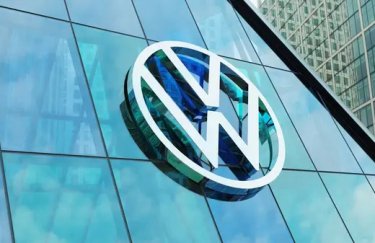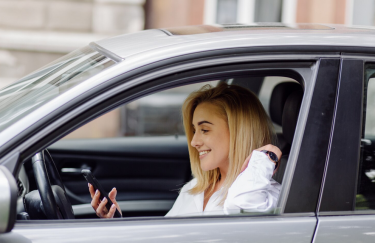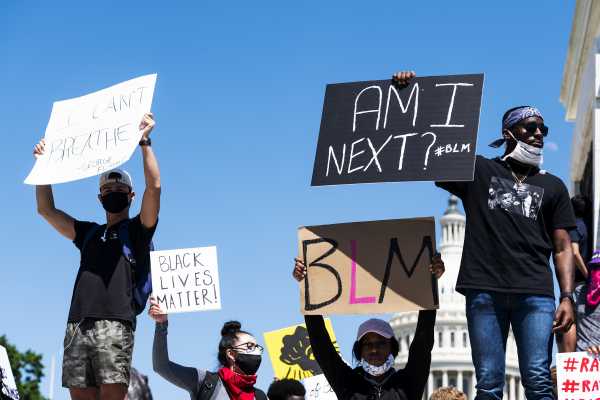
Share this story
-
Share this on Facebook
-
Share this on Twitter
-
Share
All sharing options
Share
All sharing options for:
George Floyd’s killing and the ensuing protests, explained
-
Reddit
-
Pocket
-
Flipboard
-
Email
The death of George Floyd, an unarmed 46-year-old black man killed by police during an arrest in Minneapolis, Minnesota, has sparked protests across the country. It has reignited a centuries-long conversation around racism in America and the horrendous ways black people are often treated by police. And it came amid a pandemic that is disproportionately impacting people of color.
On Monday, May 25, Floyd, who had recently lost his job as a restaurant bouncer due to coronavirus-related closures, died after being pinned down under a police officer’s knee for nearly nine minutes. That officer, Derek Chauvin, ignored Floyd’s pleas of distress as three other officers looked on as bystanders begged Chauvin to remove his knee from Floyd’s neck.
A video taken by a bystander and posted online spread quickly on social media. It shows that by the time Chauvin stopped holding Floyd down, he was silent and motionless. According to a criminal complaint filed against Chauvin, an officer on the scene checked for Floyd’s pulse before Chauvin removed his knee, and could not find it. Floyd was later pronounced dead at a local hospital.
Chauvin and the three other officers involved in the incident were fired on Tuesday, and on Friday, Chauvin was arrested and charged with third-degree murder and manslaughter.
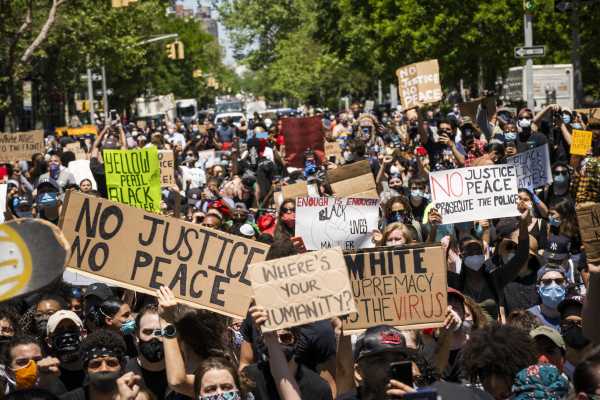
The incident has rightly prompted outrage across the country, and thousands of protesters have taken to the streets in Minneapolis — and in cities across America. While many of these protests have been peaceful, some have turned violent, with police clashes, burning buildings, and looting.
The protests have been focused on policing but come during a 2020 that has been acutely painful for people of color. The coronavirus crisis has disproportionately affected black and Latino Americans, who have become sick and died of Covid-19 at higher rates than whites. The economic turmoil brought on by stay at home measures has also hit people of color especially hard — they’ve lost more jobs, and they were less likely to be financially stable in the first place.
Add to that a cascade of headlines of black Americans whose lives have been cut short by white violence and by police in recent weeks — Breonna Taylor, Ahmaud Arbery, and, most recently, Floyd. As Americans were grappling with these tragic headlines, a video of a white woman feigning an attack by a black man bird-watching in New York’s Central Park after he asked her to leash her dog went viral. It was a reminder that beyond concerns over state violence, systematic racism creates potentially dangerous situations for black Americans doing even the most mundane things.
Related
Violent protests are not the story. Police violence is.
The protests spawned by the deaths of Floyd and others is hardly a new development in the United States — the deaths of Trayvon Martin, Michael Brown, Sandra Bland, and countless others have led to significant public outcry in recent years. Four years before Floyd’s fatal arrest in Minneapolis, Philando Castile was shot to death during a traffic stop in a nearby Minnesota suburb. Floyd told the officer who kept his knee on his neck, “I can’t breathe,” echoing the words of Eric Garner who died after being held in a chokehold in a police encounter in New York in 2014.
If it feels like we’ve seen this crisis before, it’s because we have. And still so many things haven’t changed.
Floyd died on Monday; Chauvin was charged on Friday
Floyd grew up in Houston and moved to Minneapolis in 2014 to look for work, according to CBS Minnesota. He got a position as a security guard at a Salvation Army store downtown, and then later began to work two jobs as a truck driver and a bouncer. He had a six-year-old daughter who still lives in Houston with her mother. In the weeks before his death, he’d been laid off due to Minnesota’s stay-at-home order.
Vox’s Catherine Kim explained the circumstances of his May 25 encounter with police following a purchase at a convenience store, and, ultimately, his death, as shown by video footage captured of the incident:
The four officers involved were fired on Tuesday, May 26, and the next day, Mayor Frey called for Chauvin to face criminal charges. Local officials on Thursday said they were investigating Floyd’s death “as expeditiously, as thoroughly, and as completely as justice demands” and asked for patience from the public. On Friday, Chauvin was arrested and charged with third-degree murder and manslaughter and the Justice Department said it would investigate Floyd’s death as well. Chauvin’s wife has filed for divorce, and his bail has been set at $500,000.
The day the officers involved were fired, the Police Officers Federation of Minneapolis said in a statement that all video of the incident should be reviewed and called for waiting on the medical examiner’s report. “Officers’ actions and training protocol will be carefully examined after the officers have provided their statements,” the federation said.
According to the criminal complaint against Chauvin released on Friday, Chauvin had his knee on Floyd’s neck for eight minutes and 46 seconds, including for two minutes and 53 seconds for which Floyd was “non-responsive.” Office J.A. Keung — another of the four officers fired — tried to find Floyd’s pulse shortly after he became unresponsive, and could not.
The county medical examiner’s preliminary autopsy findings say that there were “no physical findings that support a diagnosis of traumatic asphyxia or strangulation” and said that the “combined effects of Mr. Floyd being restrained by the police, his underlying health conditions, and any potential intoxicants in his system likely contributed to his death.” Floyd’s family is seeking an independent autopsy.
The reaction to Floyd’s death has been massive
The public reaction to Floyd’s death has been swift and enormous.
Politicians, celebrities, athletes, and multiple other public figures have spoken out. Former President Barack Obama released a lengthy statement calling for the country to work for a “new normal” for black Americans. “This shouldn’t be normal in 2020 America,” he wrote.
Former Vice President Joe Biden called the moment a “national crisis” and one that necessitates “leadership that will bring everyone to the table so we can take measures to root out systemic racism.” President Donald Trump expressed his condolences to Floyd’s family and said that he spoke with them.
Even members of law enforcement spoke out condemning the circumstances in which Floyd was killed. “To be honest with you, it was very difficult to watch,” Birmingham Police Chief Patrick Smith told local news outlet WBCR. He continued, “It degrades the trust in all law enforcement not just one area. When things like this happen, it spreads throughout the country. It makes all of us go back and check our relationships and make sure we are doing things the right way.”
Protests have been ignited in Minneapolis — and across the country — as people express their outrage not only about Floyd’s death, but about the underlying racism and inequality that renders being black in America dangerous, particularly at the hands of police.
Minneapolis has seen days of unrest. There have been a number of peaceful protests, but some businesses there have also been looted, including Target and TJMaxx; other businesses have been vandalized, and police stations and other buildings burnt down. Demonstrations have become increasingly volatile as local officials have asked the public for peace. The governor has called for the full mobilization of the Minnesota National Guard.
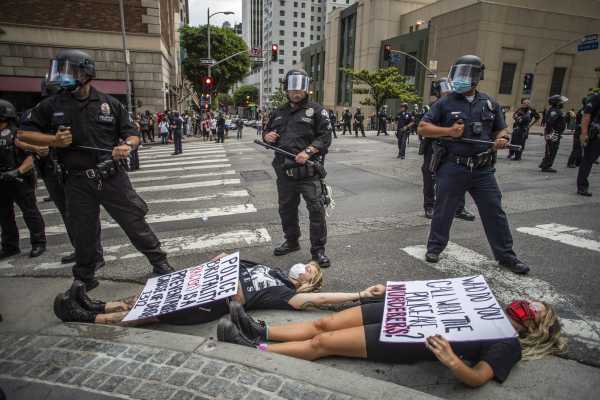
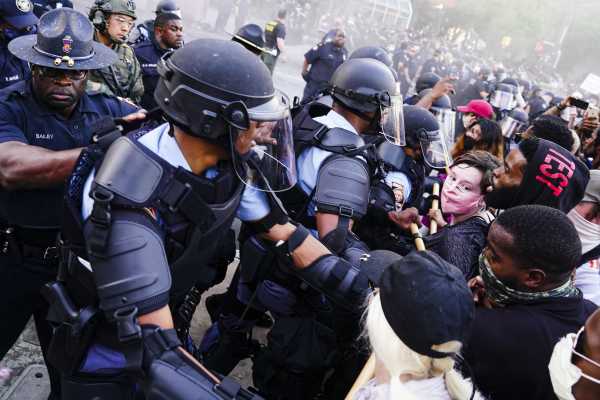
Uprisings have also spread across the country. On Friday, protests in Atlanta grew tense and violent — cars were set ablaze, and windows at the CNN building were smashed in. Atlanta Mayor Keisha Lance Bottoms pleaded with protesters for calm: “If you care about this city, then go home,” she said at a press conference.
Rapper Killer Mike, in a speech at the same press conference, struck a similar tone. “I am duty-bound to be here to simply say that it is your duty not to burn down your own house for anger with an enemy,” he said.
Protesters and police also clashed in Brooklyn on Friday evening. Cars were set fire and windshields were smashed and both protesters and police were harmed. According to ABC 7, there were more than 200 arrests reported. Some disturbing videos emerged online of the evening, including one of an officer pushing a woman to the ground and another of a police car hitting a protester with a car door.
In San Jose, Miami, Chicago, Dallas, and dozens of cities across the country, protests and arrests are taking place. Crowds of protesters have gathered outside of the White House as well. In Louisville, police officers shot pepper balls at a reporter.
Some of the details of the protests have been a little bit murky. Minnesota Gov. Tim Walz on Saturday said that about 80 percent of the Minneapolis protesters are from outside of the region, and Mayor Frey said many people protesting are not from the city as well. There has been some suggestion white supremacists or cartels may be involved, but that hasn’t been confirmed.
“Let’s be very clear, the situation in Minneapolis is no longer in any way about the murder of George Floyd,” Walz said on Saturday.
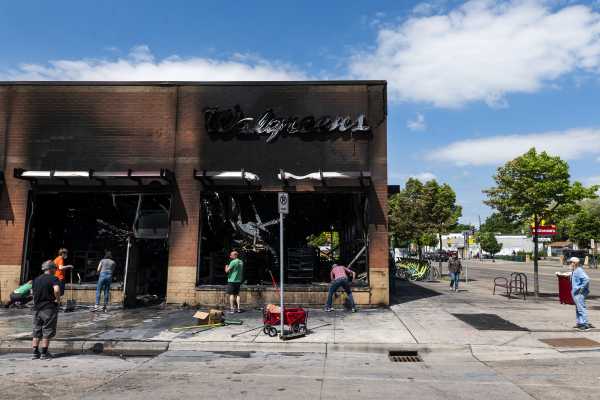
New York Public Advocate Jumaane Williams, who took part in the Brooklyn, New York, protests on Friday, noted that he saw “non-black allies in particular” escalating the situation. “That decision should not be yours to make,” he warned. He also spoke out about the “heavy police presence” at the outset of the protests on Friday, before anyone was outside. “We are dealing with people who are grieving and who are angry. The response to that cannot be a show of force,” he said.
Some states have mobilized the National Guard to respond, and mayors have enacted curfews to try to tamp down demonstrations. It is not clear how effective these will be at stemming the protests — a Friday night curfew in Minneapolis was ignored by many, for example.
President Trump isn’t exactly helping the situation. Overnight on Thursday, Trump tweeted out an apparent threat to protesters declaring, “When the looting starts, the shooting starts” that mirrored language used by segregationist law enforcement officials during the civil rights era. In the same tweet, the president called demonstrators “THUGS.” Twitter put a warning on the tweet saying it glorifies violence, fueling the fire of the president’s battle with the social media platform.
Trump later walked back the tweet, saying he was trying to warn that looting could lead to shootings because it intensifies the situation.
Into the weekend, the president weighed in online on the protests, suggesting they’re driven by antifascists and the “Radical Left,” and lashing out at CNN for its coverage of the demonstrations. He also commended the Secret Service for protecting him from White House protests — and suggested Saturday night should be “MAGA NIGHT AT THE WHITE HOUSE.”
This isn’t about the protests, it’s about what the protests are about
Beyond the debates about the tactics demonstrators are using and who is and isn’t involved, there is a much deeper issue here that must remain in focus: the way black people are treated in the United States.
As Vox’s Dylan Scott put it, violent protests aren’t the story right now, police violence is:
As Scott lays out, there are countless data points on how black Americans are targeted and mistreated by law enforcement. Black men have 1 in 1,000 odds of being killed by the police. Black people are twice as likely as whites to be pulled over by police, and they’re likelier to be searched. When they’re murdered, their murders are less likely to be solved. They’re sent to prison more often, and they are given longer prison sentences.
And for black Americans, these aren’t data points — they are real and lived situations each and every day.
And racial disparities are not just limited to criminal justice. Inequities are present in so many aspects of American life. Just look at the coronavirus crisis: the disease is disproportionately sickening and killing people of color, and it’s hitting in areas where minorities live harder. That’s true in Minnesota, where Floyd lived. Women of color are disproportionately essential workers who are putting themselves at risk, often for low-paid jobs with no health insurance. Black and Hispanic people are likelier to be laid off or furloughed during the pandemic. That’s what happened to Floyd.
In the flurry of news around the protests of Floyd’s death, on top of everything else, it can be easy to lose sight of the real problem: The centuries of racism in the bedrock of American society continue to do enormous damage. And that damage is borne in large part by black Americans.
Support Vox’s explanatory journalism
Every day at Vox, we aim to answer your most important questions and provide you, and our audience around the world, with information that has the power to save lives. Our mission has never been more vital than it is in this moment: to empower you through understanding. Vox’s work is reaching more people than ever, but our distinctive brand of explanatory journalism takes resources — particularly during a pandemic and an economic downturn. Your financial contribution will not constitute a donation, but it will enable our staff to continue to offer free articles, videos, and podcasts at the quality and volume that this moment requires. Please consider making a contribution to Vox today.
Sourse: vox.com
